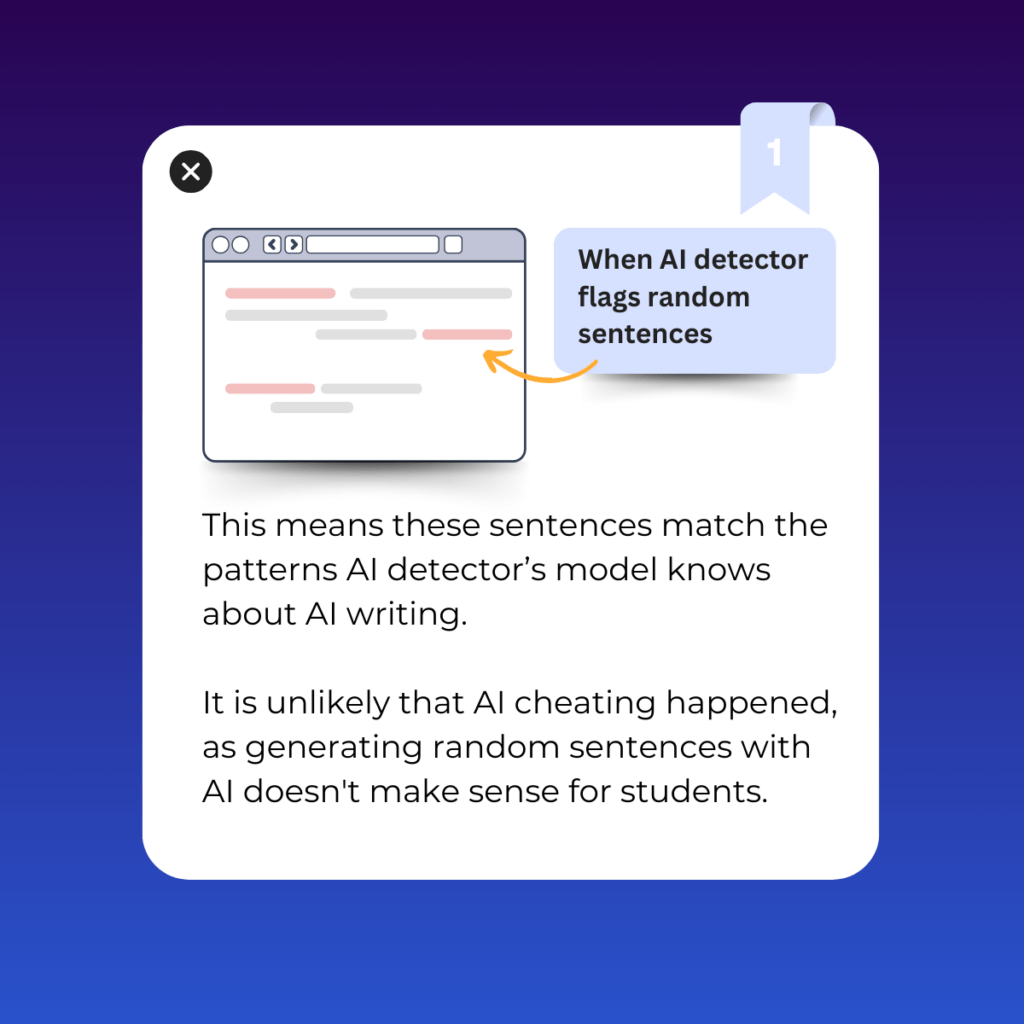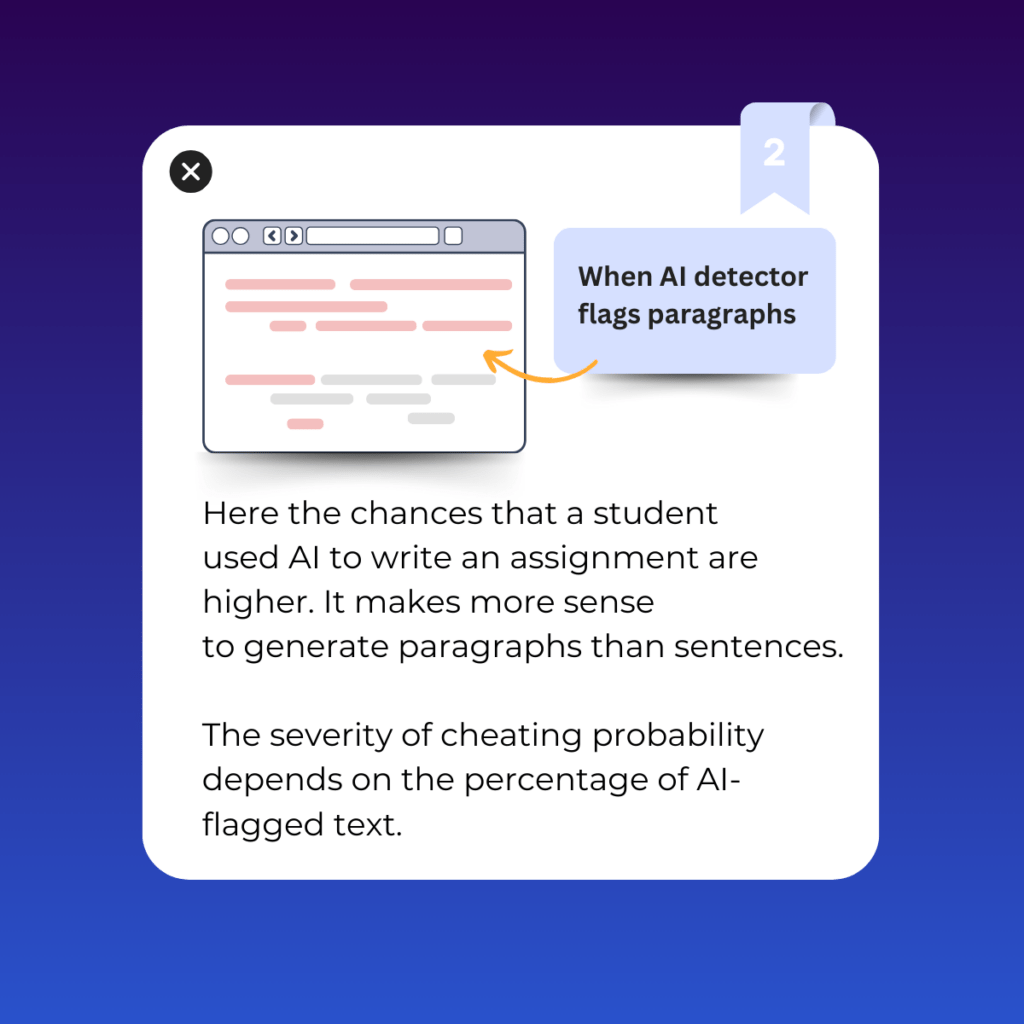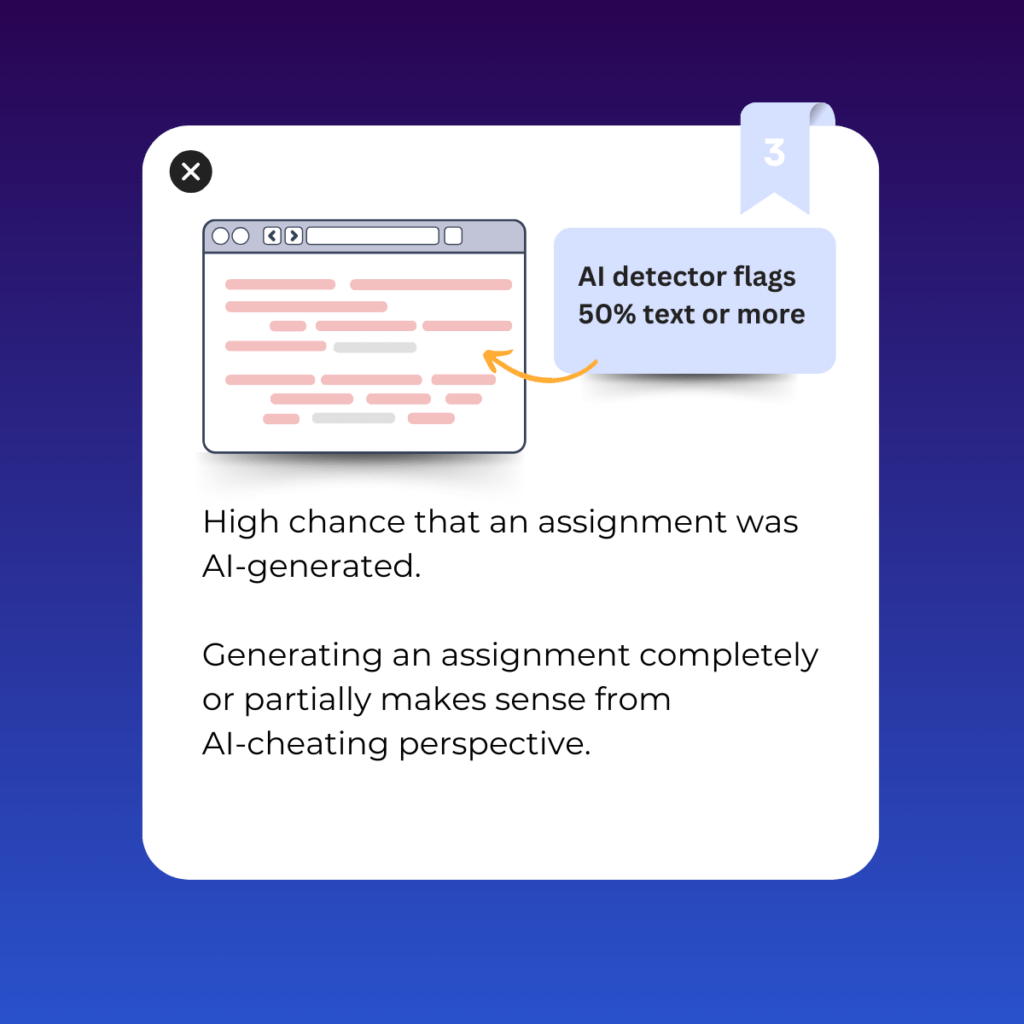Chatbots seem to have become a magic wand for the students, who aim to receive the best grades with minimum effort. However, the teachers can use special tools to find out whether the students did the homework themselves or used AI-writing models, such as ChatGPT or Gemini. In particular, TraceGPT by PlagiarismCheck.org can be integrated into any LMS, such as Moodle, Canvas, or Google Classroom. Therefore, a teacher can immediately learn about the percentage of AI in each written work submitted for evaluation, just as they learn about plagiarism using a plagiarism detector.
Can you tell if someone used ChatGPT?
AI detection tools analyze stylometry and many parameters at the level of sentences and the text in general. One can get a clear percentage result to understand not only if AI was used, but how much AI is in the student’s paper compared to the entire text. Also, one will know exactly which sentences were most likely created by AI, not by a person, because the tool will highlight them with color.
However, it is important to analyze the AI detection results. Here is how:



What affects the verdict?
The basic model of the detector is based on the Perplexity metric. Human speech and writing are characterized by a higher level of spontaneity and creativity, while machine-generated texts are more predictable. We take into account other parameters like the style and structure of the text.
Here are the key features that influence the verdict:
- The text is separately analyzed for features characteristic of human writing and AI patterns;
- The text is converted into vectors, and the characteristics are calculated in general and separately for each sentence according to the appropriate formulas;
- Depending on the set level of indicators and the degree of the weight of each of them, the % of reliability is determined.
How can I tell if a student used ChatGPT?
Any AI text detector cannot give a 100% result because human and AI writing characteristics can be similar. Moreover, AI models improve, and chatbots learn to sound more like human. The use of additional tools to manipulate artificially generated text to pass it off as human is another factor complicating the AI presence detection.
Remember that the guidelines regarding AI and plagiarism should be subjected to the Integrity Policy and communicated to students, as cheating accusations can have serious consequences. To notify the student, additional verification and a personal conversation are required.
Tools like PlagiarismCheck’s Trace GPT are a solid first step to initiate a trusting conversation with a student. With a report from machine algorithms in hand, you can ask the student about their train of thought and the conclusions expressed in the work, paying particular attention to statements labeled as AI.
Use these starters for tough AI conversations:
- Highlight strengths and weaknesses of the assignment.
- Address students’ struggles, intentional or unintentional AI misuse.
Topics for discussion:
- Time management to avoid AI misuse.
- Remediating skill deficiencies.
- Provide suggestions for review, revisions, and periodic check-ins.
Conversation jump starters:
- Let’s work together to improve areas where we see errors or AI misuse in your assignment.
- Explain your process of creating this assignment and identify areas for improvement.
- Review the AI writing and share your thoughts on why it was flagged as AI and what could be improved in those sentences.
With PlagiarismCheck.org, teachers detect AI misuse, and students perfect their writing, increasing trust and promoting honesty in academia. Join us now to see how it works!






